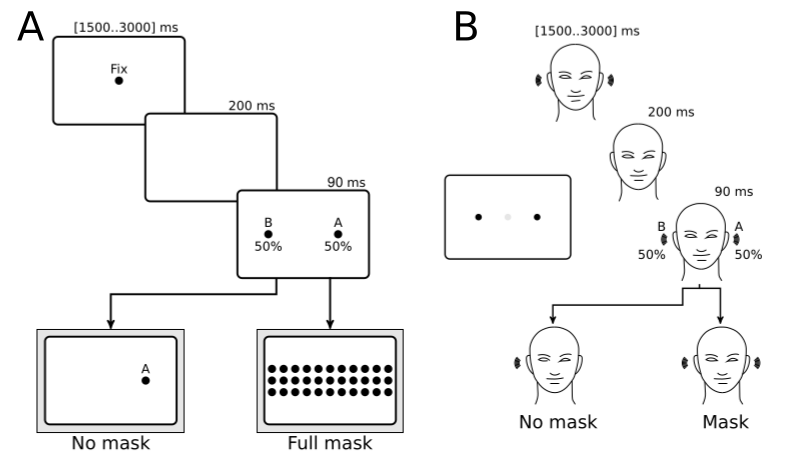Category: Parkinson's Disease: Cognitive functions
Objective: This study evaluates if basal ganglia inhibitory projections to the superior colliculus are involved in the saccadic mask inhibition phenomenon.
Background: Saccadic mask inhibition is a phenomenon characterized by a significant temporary reduction in saccadic initiation when a visual distractor is presented immediately after the onset of a visual target. It is currently believed that this inhibition occurs within the superior colliculus due to a competition between the target and the distractor in visuomotor maps [1,2]. Not only do these maps in SC play a role in the initiation processes, but they also contain information on saccade metrics. Interestingly, previous studies have either reported no accompanying amplitude changes or epicene [1,2,3,4]. An alternative hypothesis that requires additional attention suggests that an exogenous input to SC could suppress antagonistic oculomotor signals by sending strong inhibitory projections to SC.
Method: To further explore this second hypothesis, we conducted visual, auditory, and manual response tasks. This allows us to assess the behavioral response sensitivity to the mask presentation for different stimuli (visual or auditory) and outputs (saccadic or manual). In the oculomotor task, the subject must trigger a saccade to a target appearing randomly leftward or rightward. A short duration after the target appearance, a structured mask covers the target. In the visuomotor task, the subject presses a key to indicate the direction of the target step. Finally, in the auditory task, a stereo sound acts as a fixation followed by a silence gap. Then, a sound is played randomly, in the left or the right ear. After that single-ear sound, a stereo sound is played to both ears for a short duration, acting like a visual mask.
Results: Our results show a decrease in motor initiation following a distractor presentation is observed in all tasks. These findings are inconsistent with a purely oculomotor behavior centered around an inhibitory signal within SC. One candidate for the SC exogenous input is the basal ganglia. To test this assumption, a small set of patients (1 frontal dementia patient and 4 Parkinsonian patients) underwent the oculomotor task. Remarkably, Parkinsonian patients’ behavior was not modulated by the mask while the frontal patient’s behavior was modulated by the mask.
Conclusion: Our preliminary results points towards an involvement of the basal ganglia in the mask-induced inhibition.
Tasks. A: Oculomotor and Visualmotor. B: Auditory
References: Reingold, Eyal M., and Dave M. Stampe. “Saccadic inhibition in voluntary and reflexive saccades.” Journal of cognitive neuroscience 14.3 (2002): 371-388.
Reingold, Eyal M., and Dave M. Stampe. “Saccadic inhibition in reading.” Journal of Experimental Psychology: Human Perception and Performance 30.1 (2004): 194.
Edelman, Jay A., and Kitty Z. Xu. “Inhibition of voluntary saccadic eye movement commands by abrupt visual onsets.” Journal of neurophysiology 101.3 (2009): 1222-1234.
Guillaume, Alain. “Saccadic inhibition is accompanied by large and complex amplitude modulations when induced by visual backward masking.” Journal of Vision 12.6 (2012): 5-5.
To cite this abstract in AMA style:
P. Daye, A. Sangaré, B. Gaymard, P. Pouget. Evidence of basal ganglia involvement in mask-induced inhibition [abstract]. Mov Disord. 2024; 39 (suppl 1). https://www.mdsabstracts.org/abstract/evidence-of-basal-ganglia-involvement-in-mask-induced-inhibition/. Accessed December 28, 2025.« Back to 2024 International Congress
MDS Abstracts - https://www.mdsabstracts.org/abstract/evidence-of-basal-ganglia-involvement-in-mask-induced-inhibition/

